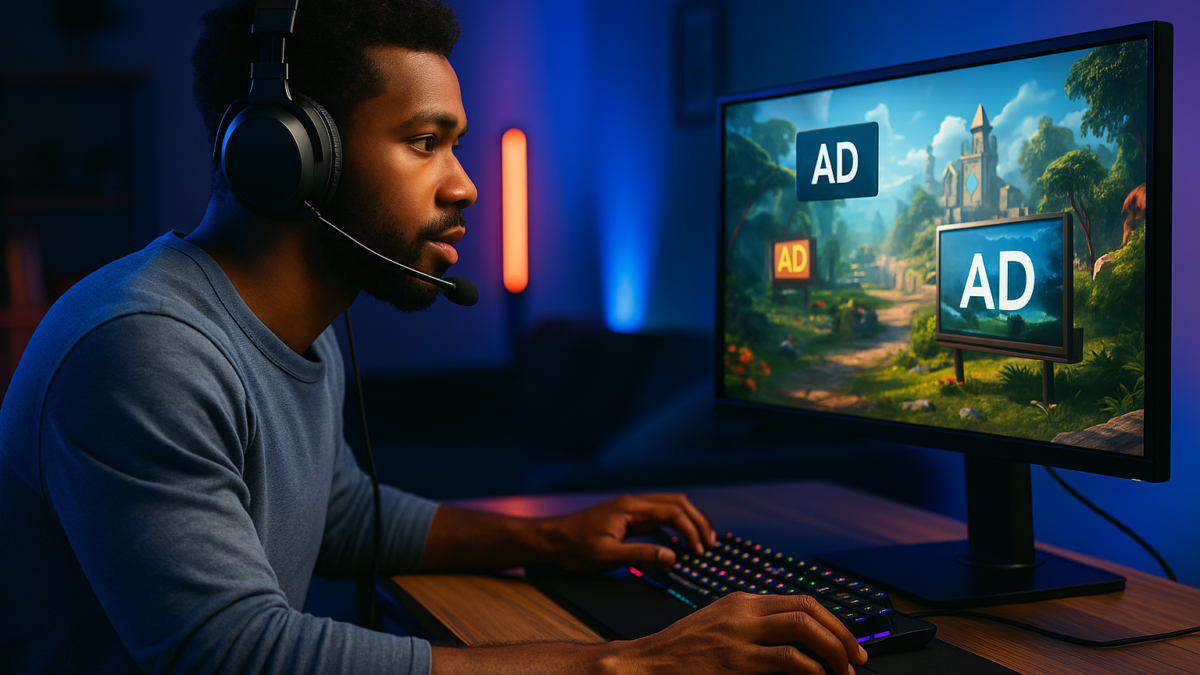The Rise of In-Game Advertising: Is Gaming the Next Big B2B Channel?
Table of Contents
Introduction
Once considered solely a B2C playground, the gaming industry is quickly becoming a viable and high-impact marketing channel for B2B brands. With billions of global users and a surge in immersive digital environments, in-game advertising is no longer just about flashy banners—it’s a strategic tool in the B2B marketer’s arsenal.
In this blog, we’ll explore how in-game advertising is evolving, why B2B marketers are taking notice, and how your brand can capitalize on this emerging opportunity.
The Gaming Boom and Why It Matters for B2B
The global gaming industry is expected to surpass $320 billion by 2026, with over 3.2 billion gamers worldwide. These users span more than just teenagers with consoles—they include executives, decision-makers, and professionals who spend time gaming on mobile, PC, and cloud platforms.
Key Drivers of the Boom:
- Widespread mobile adoption
- Growth in cloud gaming
- Rise of eSports and live streaming
- Integration of AR/VR in gaming environments
Why B2B Brands Are Entering the Game
Traditionally, B2B marketing has revolved around channels like email, LinkedIn, webinars, and whitepapers. But these channels are increasingly saturated. In-game advertising offers B2B marketers:
- Fresh Attention Channels: High dwell times and emotional engagement
- Targeting Precision: Behavioral and contextual targeting by device, genre, or user type
- Brand Lift & Recall: Immersive, non-intrusive ad formats enhance retention
Types of In-Game Advertising
- Native In-Game Ads: Integrated seamlessly into the game environment—billboards, branded merchandise, etc.
- Interstitial Ads: Ads displayed between game levels or on pause screens. Ideal for awareness.
- Playable Ads: Interactive experiences where users engage with mini-branded content.
- Programmatic In-Game Advertising: Automated ad buying across game publishers using real-time data and AI-driven targeting.
How B2B Brands Can Leverage In-Game Ads
- Target Executive Gamers Many decision-makers game after work. With proper behavioral targeting, B2B brands can run awareness campaigns aimed at CFOs, CMOs, or CTOs in niche genres.
- Industry-Specific Messaging Showcase products or services subtly in environments that align with industry tone—like enterprise software in a business simulation game.
- Brand Awareness Campaigns Instead of direct sales, B2B in-game ads should focus on recall, brand storytelling, or driving traffic to gated content.
Real-World Examples
- Intel sponsored in-game environments in Tom Clancy’s Rainbow Six Siege to promote its processing power.
- Cisco has explored AR/VR integrations in training simulations—blending brand value with virtual utility.
- LinkedIn could serve ads in management-style games like Two Point Hospital or Startup Company to promote professional development resources.
Benefits for B2B Marketers
- Uncluttered Ad Environment: Less competition than search or social
- High Engagement Rates: Gamers spend an average of 8.5 hours per week playing
- Advanced Analytics: Real-time reporting on impressions, CTR, and player interactions
Challenges to Consider
- Brand-Environment Fit: Not all games align with B2B messaging
- Ad Fatigue Risk: Overexposure or poorly integrated ads may reduce credibility
- Measurable Attribution: ROI tracking for B2B goals can be complex
Step-by-Step Guide to Get Started
- Identify Your Audience in Gaming Contexts
- Choose the Right Game Genres (Simulation, Strategy, Puzzle)
- Decide Ad Format Based on Goal (Awareness vs. Engagement)
- Pilot a Campaign and Analyze the Results
- Partner with In-Game Ad Platforms (e.g., Anzu, Bidstack)
Future of In-Game B2B Advertising
Expect more AI-powered personalization, context-aware placements, and B2B-specific ad formats designed to target niche professionals within gaming platforms.
As gamification enters enterprise platforms and virtual events become more immersive, B2B brands that embrace in-game advertising early will gain an edge in brand recall and long-term engagement.
Conclusion
In-game advertising is no longer just for consumer brands. B2B marketers are beginning to realize its potential to connect with hard-to-reach decision-makers in highly engaging, less saturated environments. From native ads to immersive storytelling, this next-gen channel could soon rival traditional display advertising in terms of awareness and influence.
Call to Action
Want to explore how in-game advertising fits into your B2B strategy? Contact Us to start a consultation.
You May Also Like: Cloud Gaming in 2025: Is This the End of Consoles?





